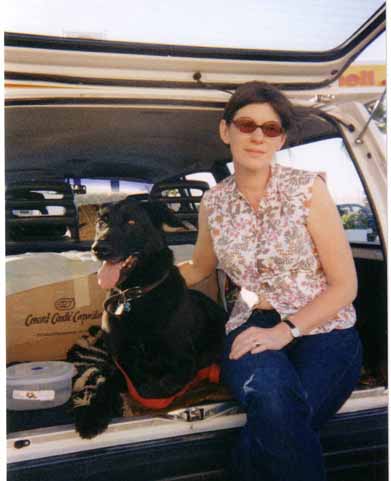For the second time in three years, Lisa Robertson has been the poet whose book has been mentioned most often in Steve Evans’ annual roundup of what is currently interesting to a roster of contemporary poets. Steve has been running this project, which he calls Attention Span, off & on, since 1998, and it’s not hard to compile from Steve’s list a multiyear roster of those whose books have been mentioned multiple times in any one year. What is so remarkable about Robertson’s repeated top showing – her book, The Men, shared the honors this year with Drew Gardner’s Petroleum Hat – is that it’s unusual for any writer to show up with multiple mentions more than once, period. Robertson’s Occasional Work and Seven Walks from the Office for Soft Architecture finished first also in 2004. In contrast, the book cited most often in 2003 was Rodrigo Toscano’s Platform. Toscano has never been cited more than once in a year since.
In spite of some methodological limitations, Evans’ annual list is a fascinating look into the dynamics of contemporary poetry. Ever since he expanded his list of invited contributors from maybe three dozen to something more like 50, he’s gotten back lists that routinely itemize between 374 and 480 items. In general, he asks his contributors to list up to 11 books – CDs and other items are also possible, but not very commonly mentioned – of what is currently interesting to the respondent. This doesn’t mean that it’s necessarily their favorite books, it could even be the most troubling, and Evans’ methodology may have a bit of the snapshot problem of catching audiences right when a lot of people have ponied up for the hot new book – would Evans get the same list three months before or after? Almost certainly not. So I wouldn’t necessarily conclude from these annual lists that Lisa Robertson is indubitably the most popular poet, even in Steve Evans friendship network, nor that Rodrigo Toscano was a one-hit wonder. But there is no question that when either publishes a new book, it generates a lot of interest right away.
Perhaps more than anything, what I see in these annual exercises is a sense of just how rich our contemporary poetry scene is – year after year, we see that the most interesting books, if we define interesting as “being of interest” to more than post-avant poet or critic, are different – there is an incredible, almost overwhelming diversity here. That I think is one of the great strengths of the current moment in poetry, but it’s also one of its great challenges as well. With 199 books mentioned more than once over the past four years, I can find only one poet who has been so listed in each of those years – Elizabeth Willis, who even had two books on the list in 2005. Robertson, Juliana Spahr and Lisa Jarnot have appeared three of the four years – further evidence that the old days of poetry as a boys’ club are long past.
Evans’ invitees tend to be skewed toward his own interests – no big surprise there – so that respondents are most often younger post-avants and what they’re reading. But one conclusion I would make from these responses is not only are the big trade houses really small presses with good binding, but that they aren’t particularly effective distributors of their own poetry. In the past four years, only one title by FSG – Jeff Clark’s Music and Suicide in 2004 – and one title by Knopf – Charles Mann’s 1491, cited twice this year – have ever received more than a single vote. Wesleyan University Press, by comparison, appeared eight times in the same period, Ugly Duckling ten times, UC Press seven times, Faux four times, Krupskaya seven times, Atelos five times, New Directions eight times, Subpress four times, and Edge five. Two larger independents closely associated with the trades – Graywolf and
I’ve noted these dynamics before. In the late 1940s, the
But even in such a cacophonous polyphony as that put forward by the absolute sum of today’s books, somebody like Lisa Robertson, a Canadian poet living these days in France, is able to reach a larger number of readers, not once, but twice, than any other writer. That’s an extraordinary accomplishment. And it suggests (once again) that this whole poetry scene is ripe material for a good anthropologist or sociologist. Especially as it transitions from the clubby coherence of a scene composed of a few hundred poets into a new century peopled by thousands.






